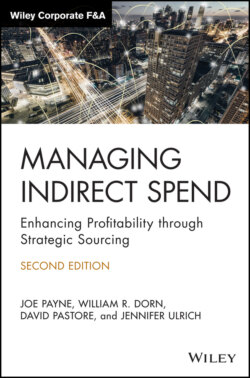Читать книгу Managing Indirect Spend - Joseph Payne, Joe Payne - Страница 33
END‐USER INTERVIEWS
ОглавлениеYou have now identified project categories, developed a project road map, identified end users (and other interested parties), and introduced your plans to the executive team. Other than supplier name and spend, you still do not have a clear concept of the specific products purchased, nor do you know the details of that particular supplier relationship. The next step is to add some context to the data you have analyzed. The best way to do this is through end‐user interviews.
End users can take many forms. They could be the people who currently interact with a particular supplier or group of suppliers, or the people who receive or use the product. The end user could even be the person who initially established the relationship with that supplier, even if that person has long since moved into a different position within your organization.
In most cases, a particular initiative would have multiple end users within the organization. These end users include everyone from buyers to Finance to engineers and beyond. Depending on your history with the supplier and the category you're sourcing, one or all of these types of end users could provide important information. It is critical to get feedback from anyone who has a stake with the supply base, directly or indirectly. Otherwise, you may overlook some aspect of servicing, or a unique attribute of the current supplier, that could cause a lot of anguish during an implementation phase if it were absent.
Initial end‐user discussions should seek to accomplish several things. First, they should build buy‐in and sponsorship for your initiative. Second, they should provide you with a detailed understanding of the current relationships with suppliers, including a history of the relationship, the reason that a particular supplier is used, and the quality and service requirements that are required if an alternate is to be considered. Third, you should set ground rules regarding the roles and responsibilities of the end user during the sourcing and negotiations phase. Let's discuss each of these points in detail.
